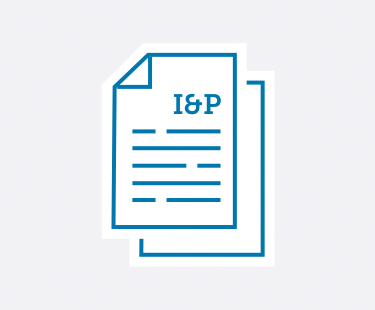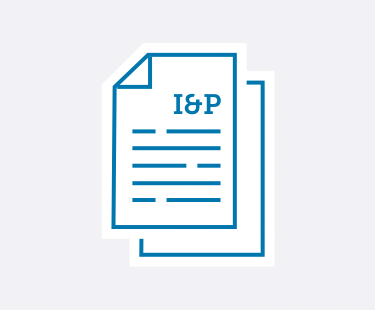

Learn practical strategies to handle emerging trends and leadership challenges in private schools.
No matter if you’re a School Head, Admission Director, Development Director, Board member, or any other private school administrator—Ideas & Perspectives®, ISM’s premier private school publication, has strategic solutions for the pervasive problems you face.
- Tuition not keeping pace with your expenses? In I&P, explore how to use strategic financial planning to create your budget and appropriately adjust your tuition.
- Enrollment dropping off? Discover how to implement the right admission and enrollment management strategies that engage your community—and fill your classrooms.
- Trouble retaining teachers? Learn how you can best support your teachers using ISM’s Comprehensive Faculty Development framework. Your faculty members will become more enthusiastic about their roles—which ultimately improves student outcomes.
- Fundraising campaigns not as successful as you’d hoped? Implement ISM’s practical advice and guidance to build a thriving annual fund, construct an effective capital campaign, and secure major donors—no matter your community size or location.
- Not sure how to provide professional development—for you and your staff? Learn ways to develop and fund a successful professional development strategy. You can improve teacher-centered satisfaction and growth, which in turn strengthens student-centered learning.
- Problematic schedule? You can master the challenges of scheduling with the help of ISM’s practical advice, based on our experience with hundreds of schools and our time-tested theories.
- And so much more.
I&P has shared targeted research, up-to-date insight, and sound theory with school leaders since 1975. More than 8,500 private school decision-makers find the answers to their schools’ administrative and governance matters in our advisory letter. We give you the strategic answers you need.
As an ISM Silver or Gold member, you not only receive issues online and in print 10 times a year, but you have access to 900+ articles in our web archive. Need help? It’s at your fingertips! Learn more and sign up for ISM's membership here.
Search
See the articles from our latest issue of Ideas & Perspectives.
Appropriate Tuition Adjustment: Recasting Financial Figures, 2011–12
Volume 36 No. 11 // September 2, 2011
Each fall, ISM publishes a set of conversion factors to facilitate the recasting of previous tuitions into current dollars. (See the table below.) We continue to use the Urban Consumer Price Index (CPI-U).1 However, we realize that the CPI-U does not completely reflect expenditures in private-independent schools; it can only serve as a base figure. There are compelling arguments for adjusting your tuition at a rate 2% above the overall inflation rate. The CPI has a built-in “productivity factor.” It assumes that the work force is increasingly productive as computers, streamlined mechanical devices, and other laborsaving developments provide greater output with fewer personnel. The more efficient a business becomes, the more the business can stabilize or reduce the effects of inflation.
1. Already a member? Click here to login.
2. Not a member? Click here to become a member.
3. Not sure? We'll help you figure it out.
Establish a ‘Key’ Policy/Security System
Volume 36 No. 11 // September 2, 2011
Even if your school has the budget for security guards, sophisticated alarm systems, and electronic access doors,* there are other steps every school can take to deter would-be thieves. Many problems stem from the fact that there are numerous keys to offices and classrooms floating around with only an informal system of tracking them. Faculty members often lend keys to upper school students who are using school facilities after hours or during the weekends. Children of employees may also present security problems.
1. Already a member? Click here to login.
2. Not a member? Click here to become a member.
3. Not sure? We'll help you figure it out.
Budgeting for Professional Development
Volume 36 No. 10 // August 8, 2011
In the recent research ISM carried out relating to faculty compensation and benefits, a corollary to the findings was this one: Schools are still underfunding professional development. In the chart below, the percent of budget spent by schools on professional development is 1% or less in 82% of responding schools. ISM’s Success Predictor No. 17 suggests that the appropriate amount is “roughly 2% of the total budget of expenses to be devoted to faculty professional development, plus an additional allocation of 1% of the total budget for support of professional development for nonteaching personnel (including Trustees).”
1. Already a member? Click here to login.
2. Not a member? Click here to become a member.
3. Not sure? We'll help you figure it out.
Are Revenue-Generating Programs Necessary for Sustainability?
Volume 36 No. 10 // August 8, 2011
Many schools are exploring alternative revenue sources to mitigate ever-increasing tuitions; some strategic plans even call for an investigation into this concept as a means to maintain sustainability. Is this a wise course of action? On the surface, exploring alternative revenue sources is indeed logical. If a school could design a way to create, for example, $265,000 in profit, tuition increases could be curtailed. This thinking can, however, be misleading—and even detrimental, in some cases.
1. Already a member? Click here to login.
2. Not a member? Click here to become a member.
3. Not sure? We'll help you figure it out.
School Head Compensation, 2010–11: Using Head Salary as an Effective Retention/Succession Tool
Volume 36 No. 10 // August 8, 2011
The School Head is the sole employee of the Board. It is essential that the Board be fully conversant about trends in Head compensation. Only then can the Board determine what adjustments, if any, are needed to ensure that the school retains the Head, or to enhance its ability to be competitive in its next Head search. Make management of the Head’s compensation a high priority, in terms of Trustees educating themselves about the marketplace and understanding the complexities of the School Head’s job. ISM recently surveyed a random sample of I&P subscriber schools concerning compensation for faculty and administrators. This article focuses on the survey results regarding the salaries of School Heads at our participating schools.
1. Already a member? Click here to login.
2. Not a member? Click here to become a member.
3. Not sure? We'll help you figure it out.
Faculty Compensation, 2010-11: Day School Insurance Benefits
Volume 36 No. 9 // July 15, 2011
Salary alone is not enough to attract and retain a mission-appropriate, quality faculty. When searching for employment today, teachers have expectations about benefits. While insurance coverage, pension plans, and paid time off are likely to devour a large portion of your school’s budget, they are critical components (with salary, of course) for the recruitment and retention of valued faculty.1 In ISM’s continuing research concerning the competition for quality teachers that private-independent schools are now experiencing, we recently surveyed a random sample of I&P subscriber schools. The 178 responding schools answered questions concerning the salaries, selected benefits, and hiring of faculty members. This article focuses on the health insurance benefits of teachers at our participating schools. (A subsequent article will discuss the survey results concerning other benefits in school compensation packages.)
1. Already a member? Click here to login.
2. Not a member? Click here to become a member.
3. Not sure? We'll help you figure it out.
Board Members and the Opening of School
Volume 36 No. 9 // July 14, 2011
Concentrated close-of-summer planning is one of your Board’s best guarantees of strong Board performance. An evening buffet or weekend cookout at the start of the school year—sponsored by the Board for faculty, school administrators, and key staff—can do much to increase your school’s sense of community and “family.” This is especially effective when invitations are extended to spouses as well. Try to hold the event on campus. The setting will remind everyone of their common tie: service and dedication to students.
1. Already a member? Click here to login.
2. Not a member? Click here to become a member.
3. Not sure? We'll help you figure it out.
The 21st Century School: Fairness, Competitiveness, and High Performance
Volume 36 No. 9 // July 14, 2011
In a previous article, we identified challenges to the school community in a 21st century learning architecture. The importance of the school community and its concomitant virtue of fairness is more important than ever. In addition, our increasingly competitive environment is causing students and parents to question the value they are getting from their school. In this article, we consider the issues of fairness, competitiveness, and high performance from the viewpoint of assessment. While this is a limited snapshot, we hope that it will encourage much deeper conversation about assessment practice among your school’s faculty.
1. Already a member? Click here to login.
2. Not a member? Click here to become a member.
3. Not sure? We'll help you figure it out.
21st Century Teaching: Stability and Challenge
Volume 36 No. 8 // June 13, 2011
While we believe that much is changing in educational architecture, we don’t believe that to be necessarily true of teaching practice. And the challenge will not be in how to teach—we actually know a lot about that already—but how to establish culture/community within the new 21st century architecture.
1. Already a member? Click here to login.
2. Not a member? Click here to become a member.
3. Not sure? We'll help you figure it out.
Faculty Compensation, 2010–11: Day School Salaries
Volume 36 No. 8 // June 13, 2011
In our continuing research concerning the competition for quality teachers that private-independent schools are now experiencing, ISM recently surveyed a random sample of I&P subscriber schools. The 178 responding schools answered questions concerning the salaries, selected benefits, and hiring of faculty members. This article concerns the salaries of teachers at day schools only (164 schools).
1. Already a member? Click here to login.
2. Not a member? Click here to become a member.
3. Not sure? We'll help you figure it out.


